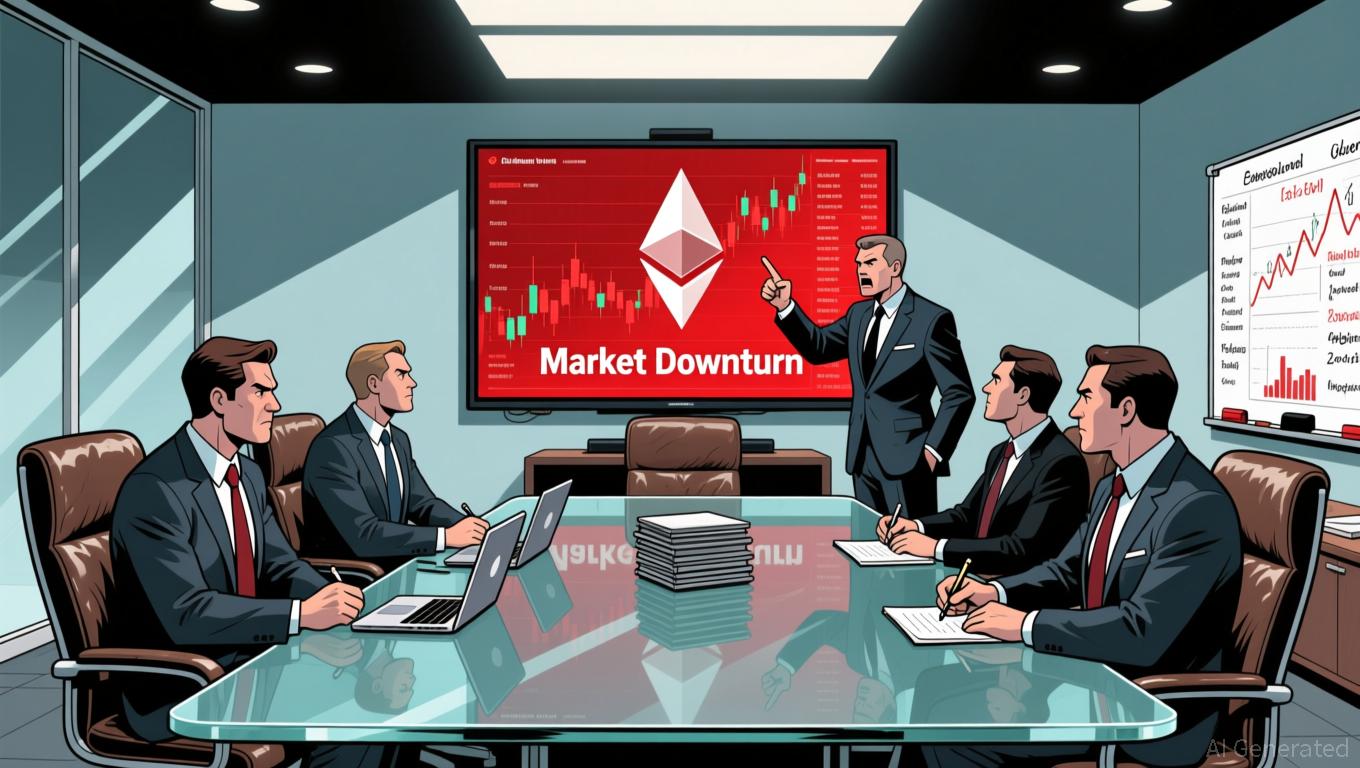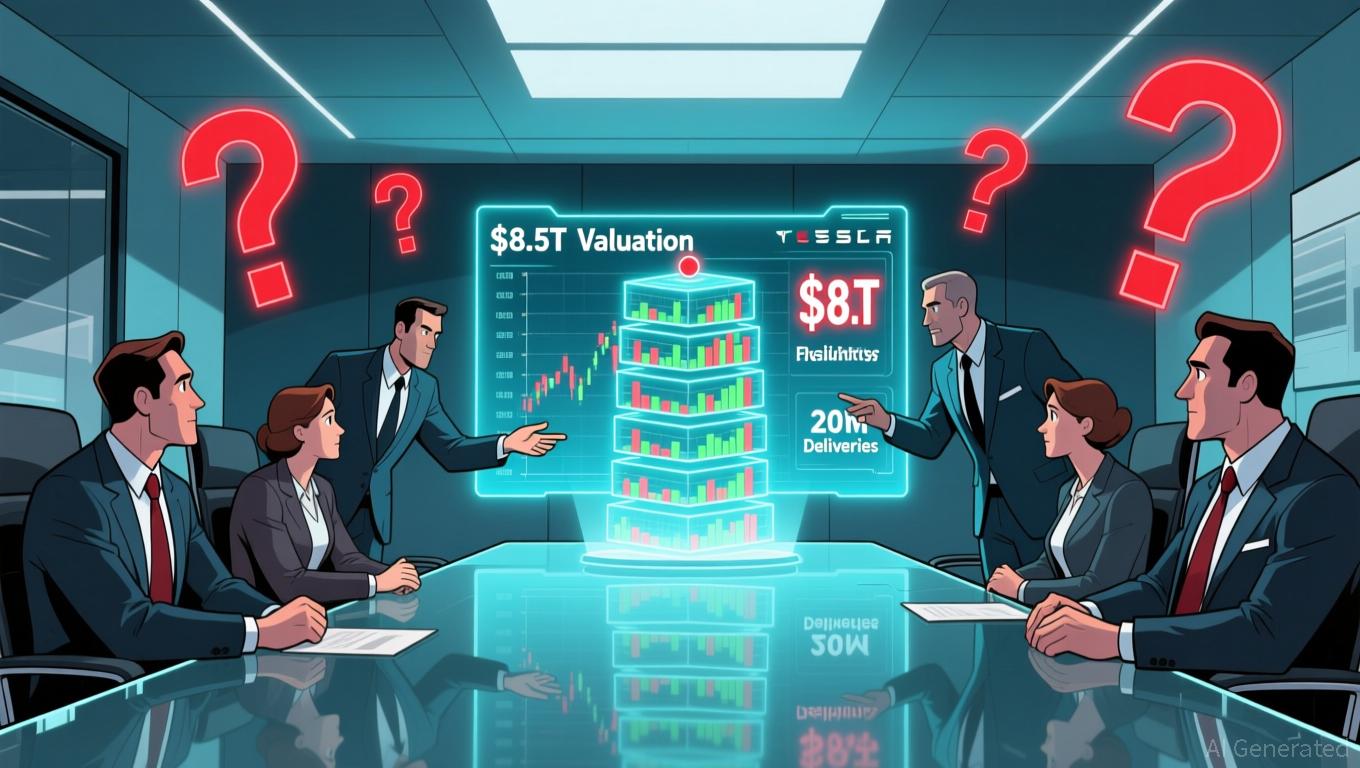SUI News Today: Sui's Mysticeti v2 Integrates Validation Within Consensus for Enhanced Efficiency
- Sui Network's Mysticeti v2 merges transaction validation into consensus, reducing latency by 35% and improving efficiency. - The update introduces a Transaction Driver that streamlines submission, cuts bandwidth usage, and enables faster confirmations via optimized validation. - Asia's nodes saw latency drop from 1.00s to 0.65s, while Europe improved by 25%, validating the protocol's performance gains. - Future updates aim to reduce message rounds and enable direct block streaming, reinforcing Sui's fast
Sui Network has introduced Mysticeti v2, a significant update to its consensus protocol based on Directed Acyclic Graphs (DAG), achieving a 35% decrease in transaction latency and boosting overall performance. This release incorporates transaction validation directly within the consensus mechanism, removing extra steps that previously caused additional computational work and delays, as detailed in the
Mysticeti was first rolled out on Sui’s mainnet in July 2024, designed to separate transaction broadcasting from ordering, which supports high throughput and resists censorship, as outlined in the Mysticeti v2 post. However, the original version kept a validation step before consensus, requiring validators to vote on transaction approval. While this safeguarded the network, it also increased latency for non-fastpath transactions—those that involve shared objects rather than exclusively owned ones, per the Mysticeti v2 post.

The Transaction Driver further refines transaction handling by replacing the earlier Quorum Driver system. Previously, transactions were sent to all validators, which required multiple rounds of signature collection and used substantial bandwidth and processing power, according to the Mysticeti v2 post. The new driver sends transactions to a single validator, who then manages certification across the network. Signatures are grouped within consensus blocks, greatly reducing bandwidth and computational demands, as explained in the Blockonomi article. Validators are chosen based on past latency to speed up confirmations, and the system includes robust retry and DoS protection mechanisms, as described in the Mysticeti v2 post.
Performance tests from Mysten Labs and its partners validate these enhancements. Full nodes in Asia experienced a 35% drop in latency, while those in Europe saw a 25% improvement, according to data from the Mysticeti v2 post. The Transaction Driver is now standard in
This upgrade highlights Sui’s dedication to its fastpath finality approach, where transactions involving only owned objects can be confirmed without full consensus, as explained in the Mysticeti v2 post. By refining both validation and submission, Mysticeti v2 moves the network closer to its optimal performance while maintaining robust security and scalability.
Disclaimer: The content of this article solely reflects the author's opinion and does not represent the platform in any capacity. This article is not intended to serve as a reference for making investment decisions.
You may also like
Dogecoin News Update: SEC Sets November 2025 as Pivotal Deadline for Dogecoin ETF Approval
- Bitwise files a fast-track SEC 8(a) ETF application for Dogecoin , targeting November 2025 approval if regulators remain silent. - The move reflects growing institutional demand for crypto exposure amid regulatory uncertainty and a competitive ETF landscape. - Grayscale's DOJE ETF and rivals' XRP/Dogecoin products highlight intensified competition, with $24M+ in early trading volumes. - Analysts project 300% DOGE price gains if resistance breaks, while SEC's crypto-friendly leadership and legal battles w

Ethereum Updates Today: SharpLink Moves ETH—A Bid for Stability or Signs of Major Overhaul?
- SharpLink Gaming transferred $14M ETH to OKX ahead of Q3 earnings amid crypto market declines. - The move highlights challenges for crypto-holding firms as ETH drops 25% in 30 days and stocks like SBET fall 4.28%. - Institutional investors increasingly use ETH staking for yield, contrasting Bitcoin-focused strategies lacking comparable returns. - CertiK emphasizes treasury management integrity as spot crypto ETFs shift focus to secure asset handling amid governance scrutiny.

Tesla’s $1 Trillion Musk Deal: Strategic Move to Keep CEO or Example of Excessive Corporate Power?
- Tesla shareholders approved a $1 trillion compensation package for Elon Musk, tied to aggressive targets like $8.5 trillion valuation and 20 million vehicle deliveries. - Critics call the package excessive, while Tesla defends it as critical to retain Musk amid his SpaceX, xAI, and Trump administration commitments. - The Texas-based approval bypasses Delaware's strict governance rules, sparking debates over "race to the bottom" in corporate accountability. - Skeptics question feasibility of targets, with

The Quantum Computing Hype Cycle and What It Means for the Valuation of Cybersecurity Stocks
- Quantum computing threatens RSA/ECC encryption by 2025, accelerating post-quantum cryptography (PQC) adoption and investment in quantum-safe firms. - NIST's 2030 PQC standards and "harvest now, decrypt later" strategies force urgent infrastructure upgrades, with governments stockpiling sensitive data. - SEALSQ leads the quantum-safe sector with $220M liquidity, $17.5M 2025 revenue guidance, and PQC-embedded semiconductors for IoT/automotive sectors. - High-risk plays like BTQ (blockchain PQC) and pre-rev
